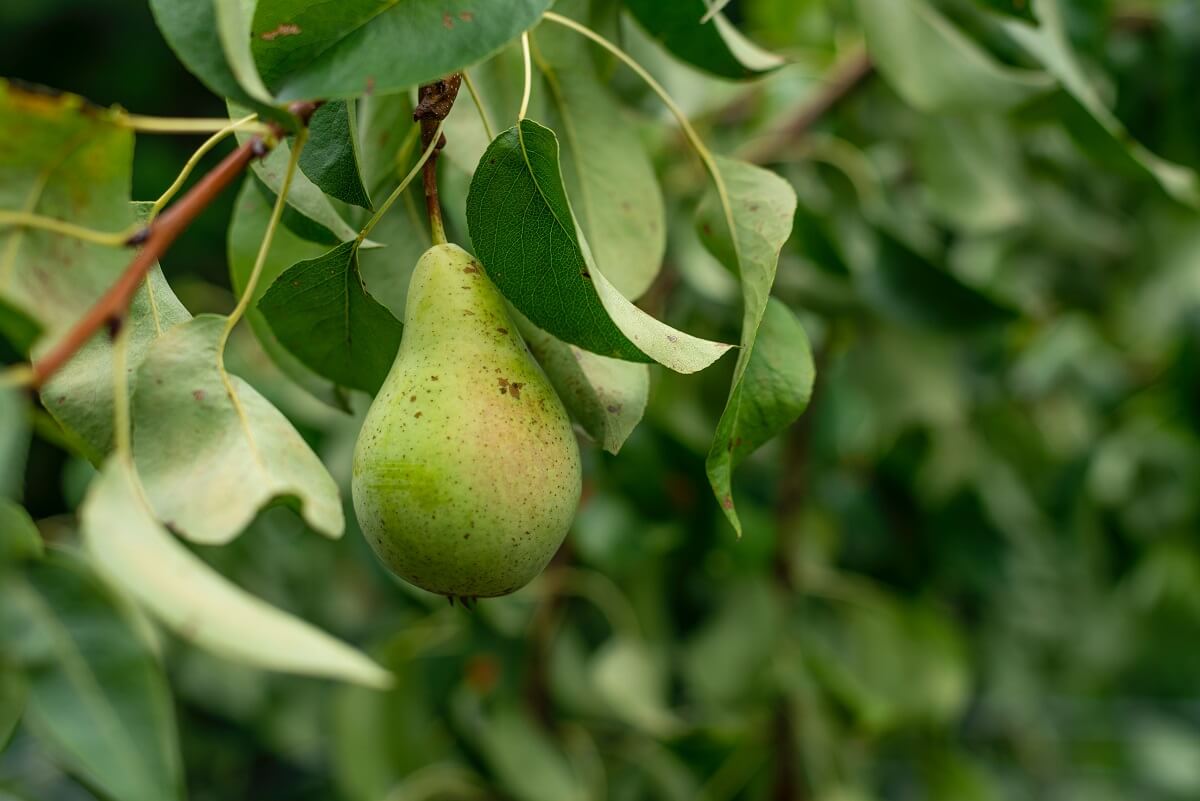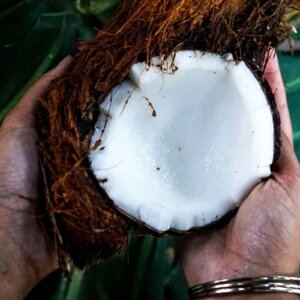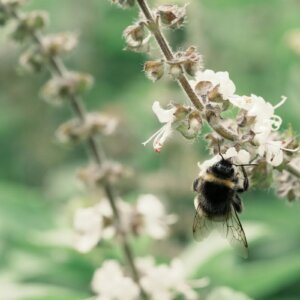When landscape professionals talk about dwarf trees, they refer to trees both deciduous and evergreen that are explicitly cultivated to remain small and manageable. If space is limited, dwarf fruit trees are the ideal solution for both visual impact and fruit production in small gardens. Dwarf fruit trees are generally short trees with broad canopies and are typically 8 to 10 feet tall and wide.
When you plant dwarf fruit trees, you can harvest an edible, homegrown, hand-picked crop sooner than you would with the same type of fruit tree in a larger size. Standard size fruit trees require up to ten years of growth before they bear fruit. Dwarf fruit trees bear fruit in only 3 to 5 years.
Some dwarf fruit tree varieties include:
- Dwarf apple trees: Goodland, Northern lights, Stayman Winesap, Chestnut crab, Blondee, and Zestar
- Dwarf pear trees: Patten, Parker, Ure, Golden Spice, and Luscious
- Dwarf plum trees: Stanley and Methley
- Multi-varietal dwarf fruit trees: Apples, plums, pears, and peaches growing on the same tree

If you are concerned that dwarf trees are the result of some weird kind of genetic modification or genetic engineering, you’ll be relieved to know that is not the case. Dwarf fruit trees are the product of centuries of horticultural tradition, in which sections of fruit trees with favorable characteristics are carefully budded or grafted on to compatible rootstock.
Most varieties of apple and cherry trees are available as an ultra dwarf (less than 3 to 6 feet tall): tough, tiny, and perfect for container planting. Apricot, pear, peach, nectarine, and plum have not yet been fully developed in ultra dwarf form. However, many dwarfs and semi-dwarf (less than 12 feet tall at maturity) varieties of these stone fruits are available for purchase online or from local landscape nurseries and home and garden centers.
Growing Dwarf Fruit Trees in Containers
If you plant your ultra dwarf and dwarf fruit trees in containers, choose large pots or tubs with adequate drainage. Containers supported on a base with casters or wheels are easy to move indoors if the weather turns nasty. Container planted trees will survive if staked and protected from fierce winds or freezing temperatures. Experienced growers advise staking dwarf fruit trees to protect against wind damage until the tree establishes firm roots.
Container plant dwarf fruit trees in a nutrient-rich soil mixture composed of three parts topsoil, two parts clean horticultural sand and one part well-aged garden compost or aged herbivore manure (cow, goat, sheep, horse, llama). Make sure the potting soil ingredients are well mixed. Fill the bottom 6 inches of the container with the mixture. Place the tree in the container, gently spreading out the roots.
Sprinkle the potting mixture around the roots, water, then add more soil. This gentle method of settling the earth around the roots prevents air bubbles or air pockets that can lead to root disease or root death. Plant the tree to the same depth as it was previously planted in the nursery.
Growing Dwarf Fruit Trees Outdoors
When planting a dwarf fruit tree outdoors, dig a hole twice as deep and twice as wide as the root ball you are planting. After removing the soil, fill the hole with water and allow it to drain away, thus ensuring that the soil around the planting site is moist and receptive to new life. Mix well-aged herbivore manure (goat, cow, sheep, horse, llama) with the soil removed from the hole: two parts topsoil to one part manure.
Soak the root ball of the tree in a bucket of water for several hours or overnight before planting. Place several inches of the soil mixture back in the bottom of the hole. Gently spread out the root ball of the tree before you place it in the hole.
Plant young trees to the same depth as previously planted in the nursery. Sprinkle the soil over the roots, watering as you add soil, to remove air bubbles or air pockets around the roots as the soil settles.
Stake the tree to prevent wind damage. If you live in a rural area where rabbits, deer or elk visit the garden, be sure to provide protective caging or fencing to keep wildlife at bay.
Selecting a Location to Plant Dwarf Fruit Trees Outdoors
Site selection (often overlooked by experienced and novice growers alike) is of the utmost importance. It’s an integral component of a thriving orchard.
It is much more challenging, labor intensive, and time-consuming to try to fix the problems of a poor site than to choose a better location and do a bit more planning before planting. The correct combination of soil type and microclimate can be vital for fruit growing success.
Even though they are comparatively small, dwarf fruit trees still need a bit of room to grow. Here are a few things to take into consideration when you’re choosing a planting location:
- Consider what the size of the canopy and the height of the tree will be at maturity.
- Avoid planting trees too close to your home or outbuildings, sidewalks, and driveways.
- Select a location where roots have plenty of room to grow without encountering plumbing pipes or underground utilities.
- Choose a spot that receives full sunshine with southern or eastern exposure. To produce an abundance of fruit, trees require 6 to 8 hours of sunshine a day.
- Make sure the soil in your chosen location drains well. An uphill 4 to 8 percent protected slope where cold air does not settle is ideal.
- Choose a location where irrigation water is readily available.
If you have questions about soil pH, site selection, or site preparation, talk to your local county extension agent. When laying out the plans for an orchard, allow plenty of space between rows. When the trees mature, the area needs to be wide enough to allow vehicles and homestead equipment to navigate between the rows for ease of spraying and to assist at harvest time.
Dwarf Tree Varieties
Dwarf apple cultivars that do well in USDA gardening zones 4 through 7 include Goodland, Northern lights, Stayman winesap, chestnut crab, Blondee, and Zestar. A miniature apple tree will produce approximately one bushel of fruit per year at maturity. Mature dwarf apple trees provide 2 to 4 bushels per year while mature semi-dwarf trees produce 5 to 10 bushels annually.
Popular pear cultivars include Patten, Parker, Ure, Golden Spice, and Luscious. Tasty and easy to grow dwarf, the Stanley and Methley Plum have proved to be dependable producers. The annual harvest at maturity for dwarf pear and plum trees is 2-4 bushels.
Although some varieties of dwarf fruit trees withstand colder climates, they tend to do best when cultivated in USDA zones 4-7.
Multi-Grafted “Fruit Salad” Dwarf Fruit Trees
Have you heard of more than one variety of fruit growing on the same tree? It was news to me when I discovered multi-grafted, multi-varietal dwarf fruit trees: the perfect solution for limited space on the terrace. Apples, plums, pears, and peaches growing on the same tree provides a generous amount of tasty fresh fruit in season.
The plant itself is a great conversation piece and adds living greenery and visual interest where space is limited. I especially enjoy cultivating two container plantings of dwarf trees that produce different varieties of apple. The different varieties ripen at about the same time, which is an excellent feature as it means they are self-fertile or pollinate each other.
I enjoy comparing the texture and flavor of different cultivars and discovering which variety is best for cooking, cider making, or baking and which ones I prefer fresh, paired with wine and cheese. For eating out of hand, Fuji and Pink Lady are my favorite varieties.
The exquisite texture and flavor of a tree-ripened, organically homegrown apple far surpass any similar fruit found at the supermarket. With ultra-dwarf and dwarf fruit trees, you can have the satisfaction of growing your own in spite of limited space.
Reasons to Plant Dwarf Fruit Trees
Although small in size, dwarf fruit trees provide a profusion of brightly colored flowers in the spring, a bountiful crop of full-sized fruit at harvest time, as well as the impressive fall foliage of a full-sized fruit tree. All without requiring the space a full-size tree needs to grow to maturity.
By planting dwarf fruit trees, you can have a wide variety of different kinds of fresh fruit at your fingertips, all within a small space. You will have plenty of fruit for jams, jellies, pies, cordials, cider, and snacks.
If like me, you hate to climb ladders, dwarf fruit trees remain size manageable. Their diminutive size allows for maintenance, pruning, and harvest, all from the safety of the ground. No matter if you live in an urban or rural setting, dwarf fruit trees with proper care can even flourish and produce fruit when planted in containers on a patio or balcony.
The world needs more trees. While it is all well and good, and undoubtedly commendable, to actively support Arbor Day and tree planting organizations, you can make an eco-friendly impact in your local community by planting trees on your property. A mature dwarf fruit tree increases property value, provides eye-catching beauty and shade, as well as food and habitat for birds and wildlife.
References
- Growing Fruit Trees in Montana, Montana State University Extension
- Rootstocks and Dwarf Fruit Trees, University of Maine Cooperative Extension
- Recommend Tree List, Maryland Department of Natural Resources
- Fruit Trees, Fruit-Trees











































Are dwarf trees natural dwarf or they are dwarfs because they in pots
Though dwarf trees are often grown in pots, they are their own specific variety. So yes, dwarf trees are naturally smaller.
When it comes to planting in pots or containers, how often should the soil be changed?